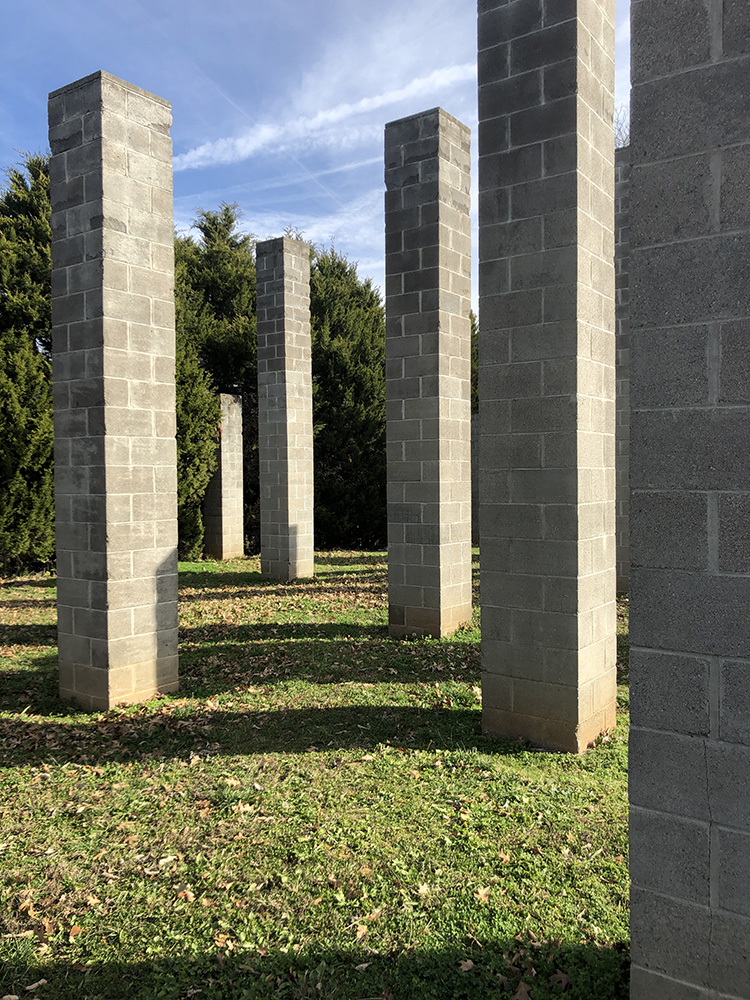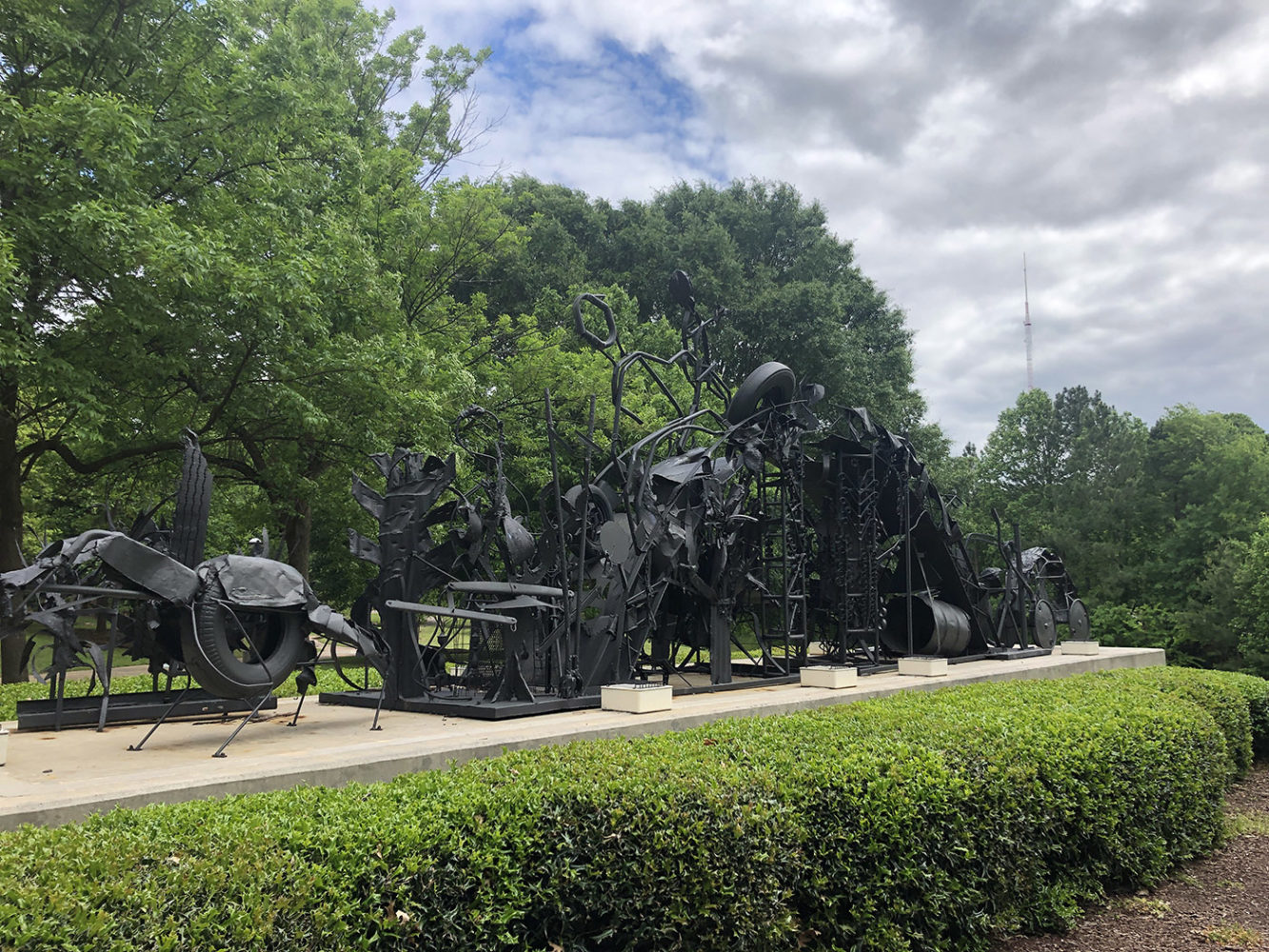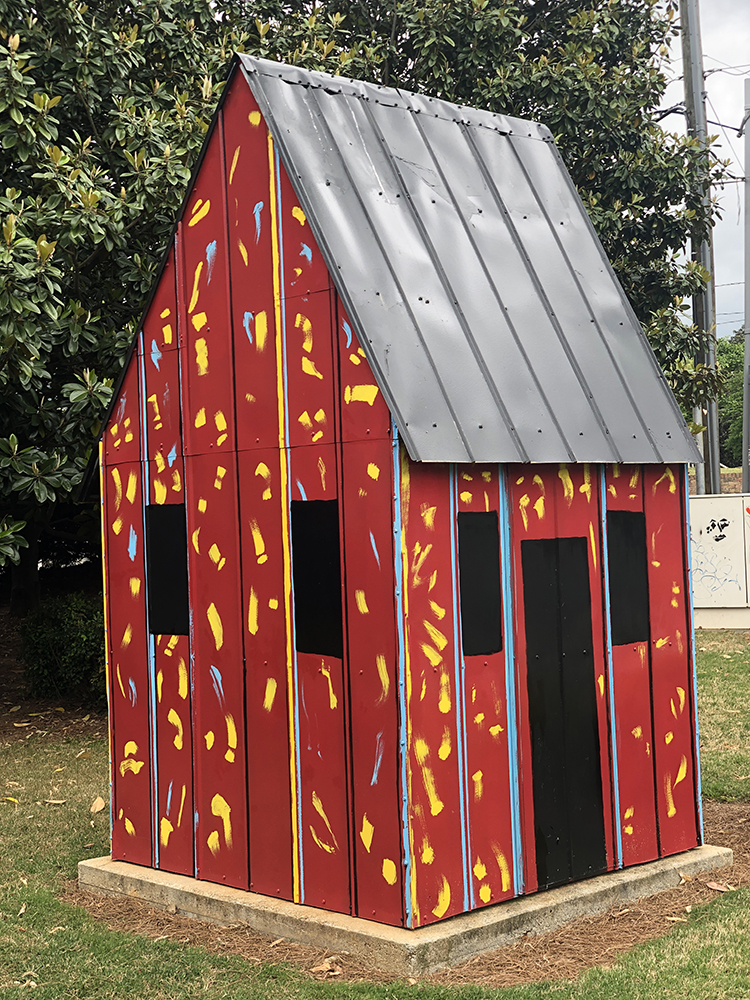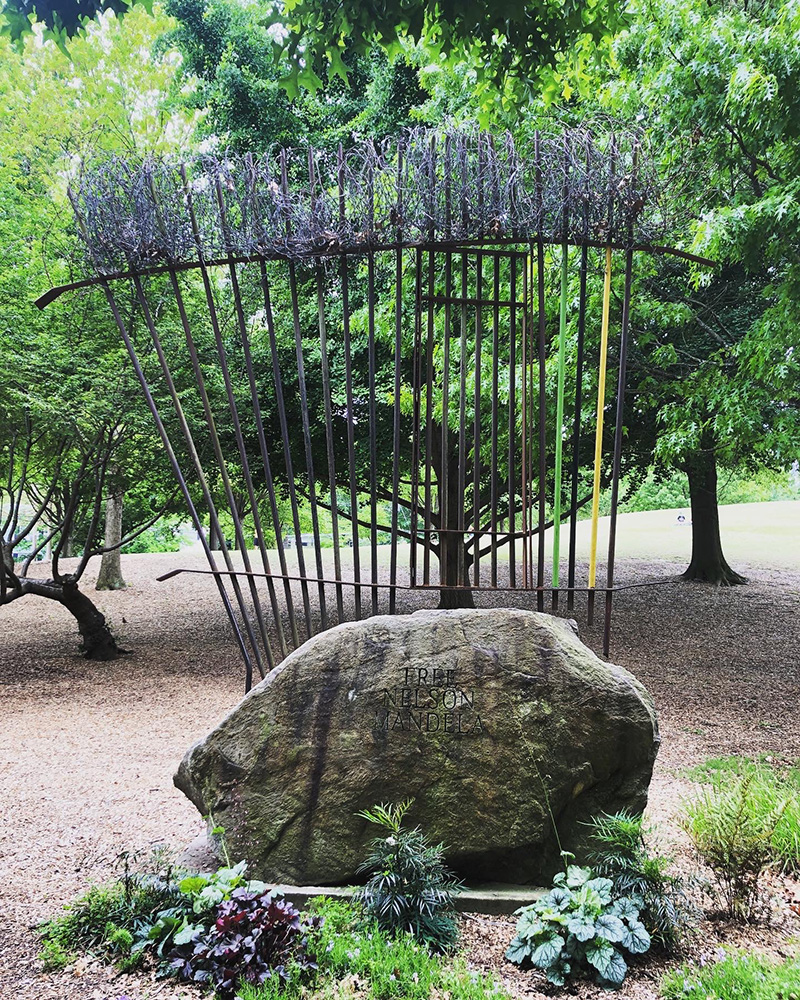During a global pandemic is an odd time to type the words no time better than now.
As we ease into week eight of the Indoor Times, people—my people—are struggling. Each day around 2 pm, we face the same uncomfortable sensation, the same irresistible urge to stand, to move; we each suffer from a difficulty with sitting still. We know the shelter-in-place rules and agree to adhere to them, to a point. Long before Governor Kemp hastily reopened the state of Georgia, Atlanta made national news with images of packed parks and a crammed Beltline. So, instead, we stick to our cars: COVID cruisers. We are after distance and time, wandering together around otherwise empty streets. We take unpredictable routes for these unpredictable times. The other drivers and I circle each other frequently, the energy drained from our faces as we cut down side streets in the dim shade under the Portman sky-bridges. The city is dizzying. Its emptiness is dazzling. I’ve never felt such deep pride for Atlanta.
Last week my drive-abouts shifted. There needed to be a goal, even if only a loosely defined route. The thing about drivers in this town is that they aren’t so much quick or aggressive as they are consistent. With limited lane options for an overabundance of vehicles, there is typically no time to roll down the window and smell the Japanese knotweed. But the one thing this pandemic has gifted us is time: time to ease up to the sidewalk and sit, no blinkers, no one on your bumper, just time to relax and let the conversation with the work meander in your mind, to linger. With these thoughts fueling me, I went in search of Atlanta’s public art gems hidden in plain sight. According to the City of Atlanta Office of Cultural Affairs Public Art website, there are over 130 works scattered throughout the city. A handful of these are inaccessible via automobile because they are installed inside recreation centers, the municipal court, or tucked into other unapproachable locations. (Did you know Sol LeWitt’s site-specific Wall Drawing #581 (1989) is located in the staff gym at City Hall?) My goal, however, was to visit the remaining public artworks, to take advantage of the lack of congestion, to get some quality one-on-one time with these landmarks, to get my art fix from inside the safe confines of my car.
Atlanta is weird as hell. I’ve always believed that, while other cities strive to be aggressively cool, Atlanta sits back and just does its thing. Sometimes, to find the cool things here, you just have to dig, to research, to talk to people that have been here longer—much longer—and you have to able to drive. But the payoff you receive is beyond worth your efforts. These public artworks represent a world-class roster of artists whose works would be the envy of any other city’s public art squad. So, shout out to Fulton County and the City of Atlanta. Despite this, none of the Atlanta-based artists I’ve spoken to about our city’s public art were fully aware that we possessed a collection of this caliber. Before we can fully celebrate all Atlanta has to offer, we must first slow down to remember and rediscover the city’s hidden treasures.
Now, buckle up.
Sol LeWitt

54 Columns, 1999
Located on Highland Ave at Glen Iris Drive
Perhaps no work of public art entirely mirrors its city like Sol LeWitt’s monumental 54 Columns, composed of fifty-four concrete masonry units, or smooth concrete columns, that jut up into the sky like building blocks sized between ten and twenty feet each. A nod to the city’s outward expansion, the columns mimic Atlanta’s skyline as viewed from the western horizon, with some constellations of buildings gathered closer together and others sporadically floating off in space. On first moving to Atlanta, I rented an apartment sight unseen because you could sit on the back porch and stare out at the tops of the columns. In a neighborhood with a staggering amount of new construction, 54 Columns is often confused as an abandoned building site. Viewing from the car window is easy, as there is an on-street parking lane directly beside the work. For those in need of vitamin D, the dull gray concrete and the patch of verdant grass make for the perfect spot to sit and let the day pass as the sunshine radiates deep into your bones.
Thornton Dial
The Bridge, 1997
Located at Ponce de Leon Ave and Freedom Parkway
The story of what is now Freedom Parkway is nuts. It took just shy of thirty years of fighting, in-fighting, court battles, barricaded bulldozers, a Georgia-born president, and protesters chaining themselves to trees to shape Atlanta’s second-largest park. In 1981, President Carter and Mayor Andrew Young developed a plan to create Presidential Parkway: a multi-lane, high-speed, tolled expressway with multiple bridges allowing suburban residents to bypass then blighted neighborhoods like Inman Park and Poncey-Highland straight to the Carter Library. 2,019 acres and 600 homes were condemned to be bulldozed. But then, local residents organized as CAUTION Inc. (Citizens Against Unnecessary Thoroughfares in Older Neighborhoods) and Road Busters (the daring, frontline civil disobedience wing of the protest), fought the law… and won.

John Lewis Plaza is tucked into the corner where Freedom Parkway and Ponce de Leon meet. In looking for a sculpture to inhabit the space, Congressman John Lewis selected an artist with a background similar to his. Born in 1928 in Emelle, Alabama, Thornton Dial lived through some of the darkest moments of American history and emerged with metaphorical paintings and found-object sculptural constructions that brought him international acclaim. The unrelenting traffic on Ponce typically makes seeing Dial’s work from the car impossible, but these days I’ve had no trouble pulling over and letting fellow wanderers roam over into the left lane to pass me. Obviously, under normal circumstances, I’d recommend getting out of the car, as the work is down a slight slope, because the deep, dark color of the metal objects can cause some details to disappear. The forty-two-foot-long piece is titled The Bridge, a reference to the “Bloody Sunday” march Lewis led across the Edmund Pettus Bridge in Selma. The bridge is a gateway, a boundary between here and there. Much like the life and struggles Mr. Lewis has led, this bridge is never just one passageway, but rather a series of confrontations that ebb and flow over time, hitting both high peaks and low lows.

Beverly Buchanan
Hard Days Work Shack, 1988
Located at Studioplex, 659 Auburn Ave NE
The artworks Beverly Buchanan created were about moments of recollection. She traced the contours of her subconscious mind to depict structures and landscapes long left behind, delving into the gray areas between reality and fantasy, love and disappearance—all of which are artificial or subjective to a degree. Hard Days Work Shack is a painted tin sharecropper’s shack, something the mind impulsively conjures when you consider the rural South but likely seldom see. Tall and mysterious, this particular shack has the feeling of being from a film set, and after a recent restoration by Atlanta’s Public Art Program, the paint has returned to its early glory. Only when you get closer does it become apparent the windows and doors are painted on. It’s a ruse, a memory of a memory.
Ralph Helmick
Through His Eyes, 1996
Located at John Wesley Dobbs Plaza, Fort St. & Auburn Ave. SE

No work in Atlanta has taught me more about my home than this one, an oversized “portrait mask” depicting the Civil Rights leader John Wesley Dobbs. Sitting in a plaza at the corner of Fort St. & Auburn Ave. SE, in the deep shadows of I-75/85, Dobbs stares out at Sweet Auburn, historically the main cultural and retail street of Atlanta’s African American community. Despite all of the giants of American history living and working in the neighborhood, this was Dobbs’s domain. He was long known as the unofficial “mayor” of the street.
Dobbs understood that votes brought representation and that votes meant power. Before he co-founded the Atlanta Negro Voters League with civil rights attorney A.T. Walden in 1936, less than 600 Black residents were registered to vote in Atlanta. Between 1936 and 1946, they registered 20,000 new African American voters. From this point forward, winning Atlanta meant having to work for the Black vote. In 1948, Dobbs convinced mayor William B. Hartsfield to integrate the city’s police force. Having lived his entire life under segregation, Dobbs later turned his attention to the integration of the Atlanta public schools. He died on August 30, 1961, at the age of 79, during the same week that the Atlanta city schools were desegregated. Only twelve years after his passing, Maynard Jackson Jr., his grandson, became Atlanta’s first Black mayor. In this sculpture, the artist left the visionary’s eyes empty, allowing viewers to see Auburn Avenue—and all of Atlanta—with the vision of what Dobbs dreamed it could become.

David Hammons
Nelson Mandela Must Be Free to Lead His People and South Africa to Peace and Prosperity, 1987
Located at Piedmont Park, Charles Allen Dr. NE and 10th St. NE
Okay, I cheated a little on this one as it cannot be seen directly from the car. However, I parked a half-block away on Charles Allen Drive, and the sculpture is right there as you enter Piedmont Park through the Charles Allen Gate. Head over on a weekday afternoon, and parking is a breeze, and the park crowds should be thin. This rogue journey out of the car is well worth it as David Hammons is one of the most elusive and influential artists living today. Free Nelson Mandela are the heavy words engraved on the sculpture’s granite base. The work has lived many lives, beginning when Hammons created it during Mandela’s imprisonment while serving as artist-in-residence at Atlanta’s Arts Festival. At that time, because Mandela was still imprisoned, the functional gate on top of the granite base was shut with a padlock. After his release in 1990, the gate was opened and has remained open ever since. After the opening of the gate of its three bars were painted, green, black, and yellow to represent the colors of the South African flag.
Lonnie Holley
Earth Flower, 1996
Located at Folk Art Park, Piedmont Ave. NE at Baker St. NE
I’m not certain why the city dared to call it a park, but there is no denying that the Folk Art Park is a site for some incredible art. Because it is split between leftover portions of two cement highway bridges above Downtown’s 75/85 connector, usually there is not a single place to park to view either side of the Folk Art Park up-close—until now. (During a global pandemic is an odd time to type the words no time better than now.) I’ve been several times over the past month and have had no trouble pulling directly up to work, flicking on the hazard lights, and spending some time there. As these strips of concrete are quite narrow, the views are not obstructed from the driver’s seat. The site features work from a veritable Who’s Who of Southern artists, including Howard Finster, Eddie Owens Martin (St. EOM), Burgess Dulaney, R.A. Miller, James Harold Jennings, Vollis Simpson, and Archie Byron, among others.

My personal favorite work is a Styrofoam and concrete slab by Lonnie Holley that bares a fluidity of forms. Young and old souls float in an embryonic state, mingling, reflecting, growing off of each other. As a counterpoint to the weighty material, the otherworldly figures are not frozen; instead, this sculpture appears more akin to an ancestral chart showing the lineage of young kings and queens.
Let’s just not call this place a park.

Hubert Puckett
The Big Chicken, 1956
Located at 12 Cobb Pkwy N, Marietta, GA 30062
Yeah, I included The Big Chicken. In these fragile times, who doesn’t want a moment to smile at its ridiculousness? And that matters. The structure was initially built in 1956 for S.R. “Tubby” Davis’s eatery known as Johnny Reb’s Chick, Chuck ‘N Shake. As more businesses and fast-food competitors stretched out along the parkway, Tubby needed something more unique than his fifteen-cents “Reb” burgers. Designed by a Hubert Puckett, a Georgia Tech student in architecture, the fifty-six-foot-tall steel-sided structure creates the appearance of a chicken rising up from the top of the building, drawing the attention of suburban commuters on Cobb Parkway. It is one of the seminal examples of novelty architecture in the United States, a brilliant piece of advertising that these gifted magicians used to attract motorists like myself out to Cobb County, where I otherwise have no business being. After an intense storm in early 2017, The Big Chicken underwent a twelve-week, $2.2 million renovations. And there it stands, an indelible witness to our tiny lives, day after day.




